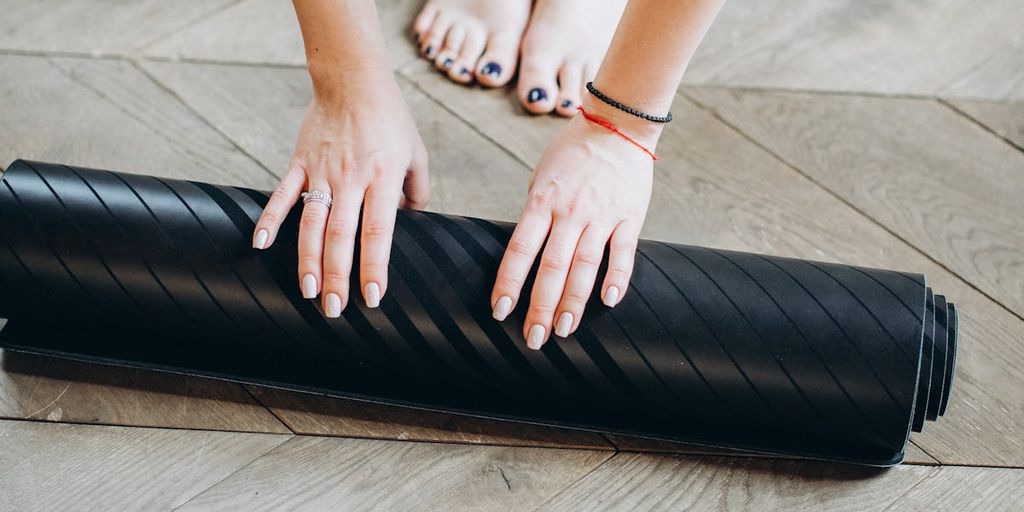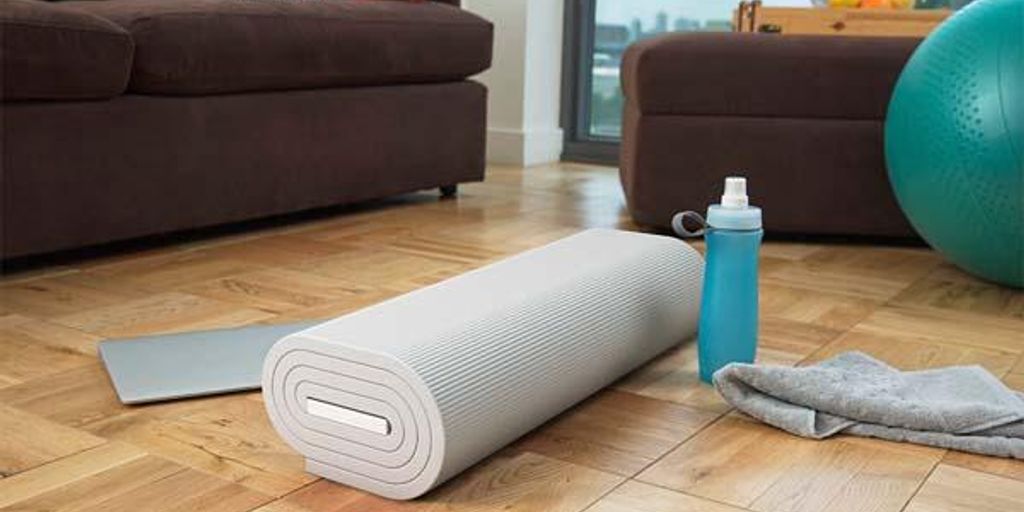
Choosing the Right Yoga Mat Dimensions for Your Practice
Choosing the right yoga mat dimensions is crucial for enhancing your yoga practice, ensuring comfort, safety, and suitability for various yoga styles and body types. This article explores essential aspects to consider when selecting yoga mat dimensions, including standard sizes, material choices, and practical tips for use and customization.
Key Takeaways
- Understanding the right dimensions enhances safety and comfort during yoga.
- Standard yoga mat dimensions vary, and thicker or wider options may be beneficial depending on practice needs.
- Material choices, such as natural or synthetic, impact the size, durability, and environmental footprint of yoga mats.
- Different yoga styles require specific mat dimensions for optimal practice, such as wider mats for restorative yoga or durable mats for hot yoga.
- Customizing yoga mat dimensions can be achieved with specific tools and techniques, offering a tailored practice experience.
Understanding the Importance of Yoga Mat Dimensions
Impact on Comfort and Safety
Choosing the right yoga mat dimensions is crucial for ensuring comfort and safety during practice. A mat that is too small can lead to slipping and injuries, while a mat that is too large may be cumbersome and difficult to handle. Proper mat size provides adequate space and cushioning, enhancing the overall yoga experience.
Influence on Yoga Poses
The dimensions of a yoga mat can significantly affect the execution of yoga poses. A mat that is too narrow may restrict movement and pose variety, especially for dynamic styles like Vinyasa. Conversely, a mat that is too wide might not provide the necessary grip for balance poses. Selecting a mat with the right dimensions ensures that all poses can be performed with precision and stability.
Choosing Based on Body Type
It's essential to consider one's body type when selecting a yoga mat. Taller individuals or those with a larger frame might require a longer and wider mat to comfortably accommodate their size. Conversely, those with a smaller build may find a standard-sized mat adequate. Tailoring the mat size to the individual's body type enhances both comfort and functionality during practice.
Standard Yoga Mat Dimensions and Variations
Common Sizes and Thickness
Most yoga mats typically range in thickness from 1mm to 6mm. Three to five millimeters is the most common thickness, providing a balance between comfort and stability. Here's a quick breakdown of the thickness options:
- 1mm: Ultra-thin, travel-friendly
- 3-5mm: Standard, best for balance
- 6mm: Extra cushioning, ideal for joint protection
Pros and Cons of Thicker Mats
Thicker mats, particularly those around 6mm, offer enhanced cushioning which is beneficial for yogis with sensitive joints or those practicing on hard surfaces. However, the increased thickness can sometimes reduce stability for balance poses. Stability is crucial in yoga, making the choice of mat thickness a significant consideration.
When to Choose a Wider Mat
Wider mats are ideal for those who require more space during their practice. They provide ample room for various poses and are particularly useful for taller individuals or those who enjoy more expansive movements. Choosing the right width ensures comfort and safety during practice, making it an essential factor for many practitioners.
Material Choices and Their Impact on Mat Dimensions
Natural vs Synthetic Materials
Choosing between natural and synthetic materials for your yoga mat can significantly affect its performance and sustainability. Natural materials, such as rubber or cotton, often provide better grip and eco-friendliness but may wear down quicker than synthetic options like PVC or TPE, which offer more durability and water resistance.
How Material Affects Mat Size and Durability
The type of material not only influences the environmental impact and feel of the mat but also its size and durability. Thicker materials, such as padded foam, can provide extra comfort but may make the mat bulkier and harder to transport. Conversely, thinner materials might be less durable but are typically more compact and easier to carry.
Eco-Friendly Options
When considering eco-friendly options, it's important to look at both the material and the manufacturing process. Mats made from recycled or sustainable materials like jute or organic cotton are available and offer a responsible choice without compromising on quality or performance. These options often come with certifications like OEKO-TEX or GOTS, ensuring they meet high environmental and health standards.
Tailoring Yoga Mat Dimensions to Different Yoga Styles
Mats for Restorative Yoga
For restorative yoga, where comfort and support are paramount, thicker mats are often recommended. These mats provide extra cushioning, which helps in maintaining poses for longer periods without discomfort. Choose a mat that is at least 6mm thick to ensure adequate support.
Best Dimensions for Vinyasa
Vinyasa yoga requires a mat that balances support with the ability to move freely. A standard size mat (about 68 inches long and 24 inches wide) usually works well, but ensure it has a good grip to accommodate the dynamic movements. Thickness should be around 4-5mm to provide a stable surface without too much bulk.
Choosing Mats for Hot Yoga
Hot yoga mats need to be durable and highly absorbent to handle the sweat and heat. Look for mats specifically designed for hot yoga, which are often made of materials that provide better grip when wet. Additionally, these mats should be easy to clean and maintain. Opting for a slightly larger mat can be beneficial, as it gives more room to spread out and helps in managing perspiration.
Practical Tips for Transporting and Storing Your Yoga Mat
Carrying Solutions for Larger Mats
Finding the right carrying solution for larger yoga mats can be challenging. Opt for a yoga mat bag with adjustable straps to accommodate the extra width and length. Alternatively, consider using a yoga mat sling, which is a simple strap that wraps around your mat and allows for easy shoulder carrying.
Storage Tips to Maintain Shape and Size
Proper storage is crucial to maintain the shape and size of your yoga mat. Store your mat in a cool, dry place away from direct sunlight. Rolling the mat loosely and storing it vertically can prevent creases and maintain its flatness. Avoid folding your mat, as this can create permanent creases.
Compact and Travel-Friendly Options
For yogis on the go, choosing a compact and travel-friendly yoga mat is essential. Look for mats that are lightweight and come with their own carrying case. Some mats are designed to be foldable, fitting easily into a suitcase or backpack without taking up too much space.
How to Measure and Cut Custom Yoga Mat Dimensions
Tools and Techniques
To accurately measure and cut your yoga mat, you'll need a few essential tools: a measuring tape, a straight edge, and a sharp cutting tool. Begin by measuring the desired length and width on your mat. Use the straight edge to draw precise cut lines, ensuring they are straight and even. Always cut on a flat, stable surface to avoid any accidents or uneven cuts.
Safety Precautions
When cutting your yoga mat, safety should be your top priority. Wear protective gloves to prevent any cuts or abrasions. Ensure your cutting area is clear of obstructions and that your tools are in good condition. It's crucial to keep your hands away from the cutting line and to cut slowly and steadily.
DIY Customization Ideas
Customizing your yoga mat can enhance your practice by tailoring it to your specific needs. Consider adding unique patterns or lines to help with alignment during poses. You can also trim your mat to fit into smaller spaces or for easy transport. Experiment with different shapes or sizes to find what works best for you, keeping in mind the importance of choosing the right yoga mat size for comfort and safety.
Looking to customize your yoga practice with a mat that perfectly fits your space and style? Dive into our guide on 'How to Measure and Cut Custom Yoga Mat Dimensions' and discover the best ways to tailor your yoga experience. For more detailed instructions and a wide selection of yoga mats, visit our website at Yune Yoga and find the ideal mat that meets your needs!
Conclusion
Choosing the right yoga mat dimensions is crucial for enhancing your practice and ensuring comfort and safety. By considering your body size, the type of yoga you practice, and the space you have available, you can select a mat that supports your needs. Remember, a well-chosen yoga mat can make a significant difference in your yoga journey, providing the necessary stability and cushioning for effective poses and movements. Take the time to assess your requirements and invest in a mat that will help you achieve your yoga goals with ease and confidence.
Frequently Asked Questions
Why are the dimensions of a yoga mat important?
The dimensions of a yoga mat are crucial as they affect comfort, safety, and the effectiveness of your yoga poses. Proper sizing based on body type and yoga style can enhance your practice.
What are the standard dimensions for yoga mats?
Standard yoga mats typically measure about 68 inches long and 24 inches wide, with a thickness of around 1/8 inch (3 mm). However, variations exist to cater to different needs.
How do different materials affect yoga mat dimensions?
Material choice can influence the size, durability, and texture of a yoga mat. For example, thicker materials like rubber may offer more cushion but can be heavier, while lighter materials like PVC might provide less support but are easier to transport.
What are the best yoga mat dimensions for restorative yoga?
For restorative yoga, a wider and thicker mat is ideal as it provides more cushioning and space to perform various poses comfortably.
How can I transport and store a large yoga mat?
For larger mats, consider using carrying straps or a yoga mat bag for easier transportation. For storage, keep the mat rolled up tightly in a cool, dry place to maintain its shape and size.
Can I customize the dimensions of my yoga mat?
Yes, you can customize your yoga mat by cutting it to your desired size. Use appropriate tools and follow safety guidelines to ensure a clean cut without damaging the mat.


